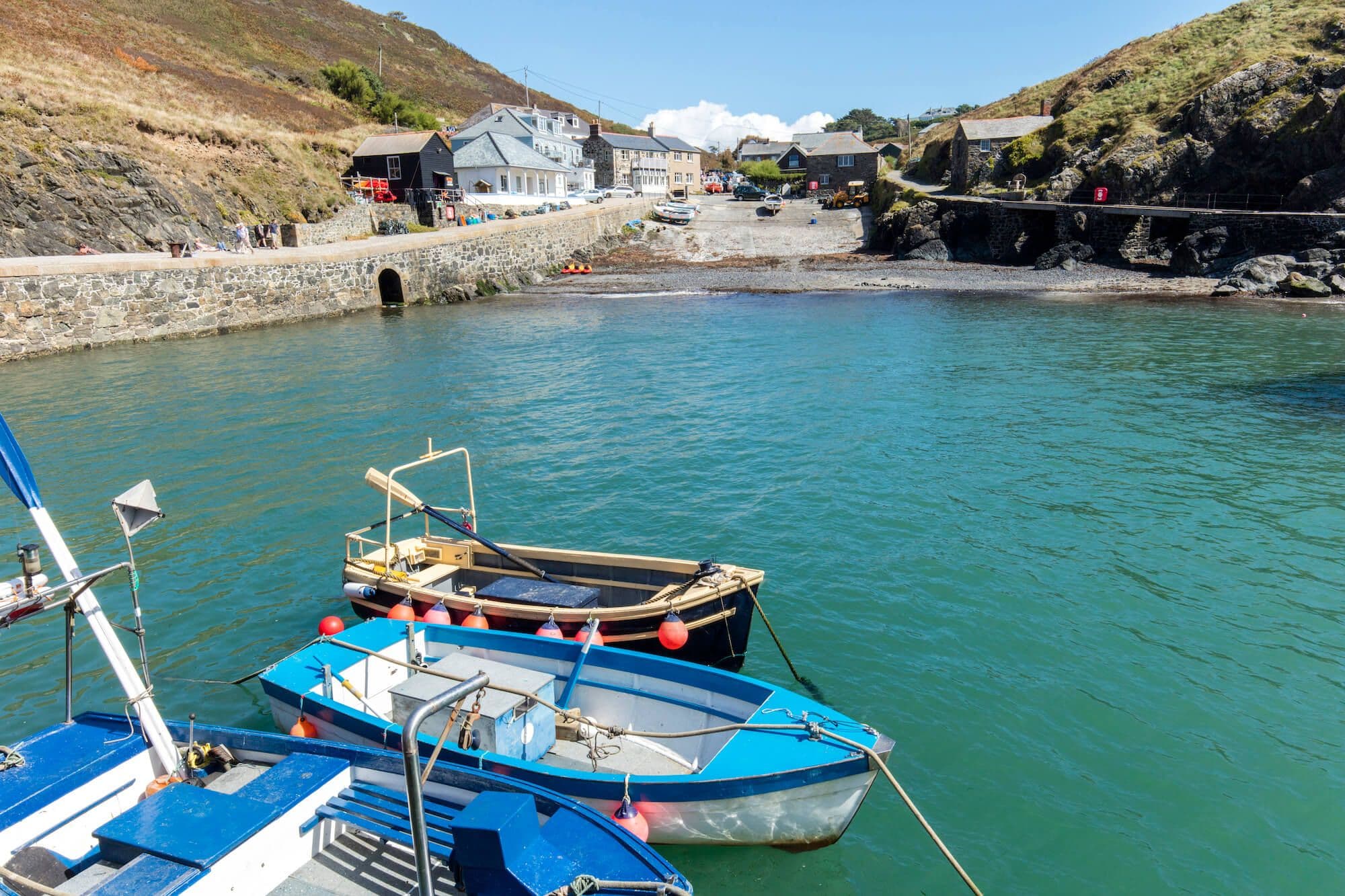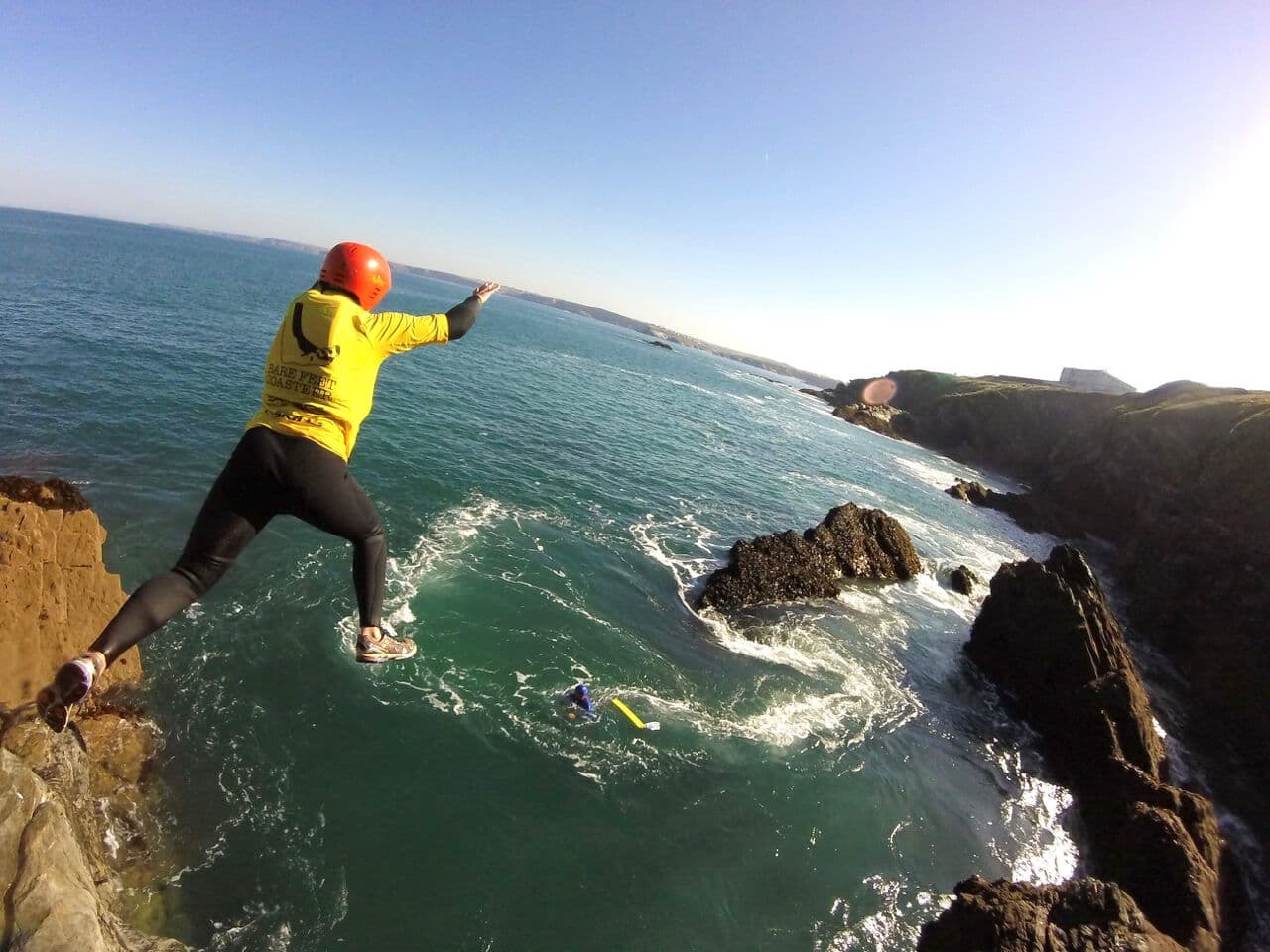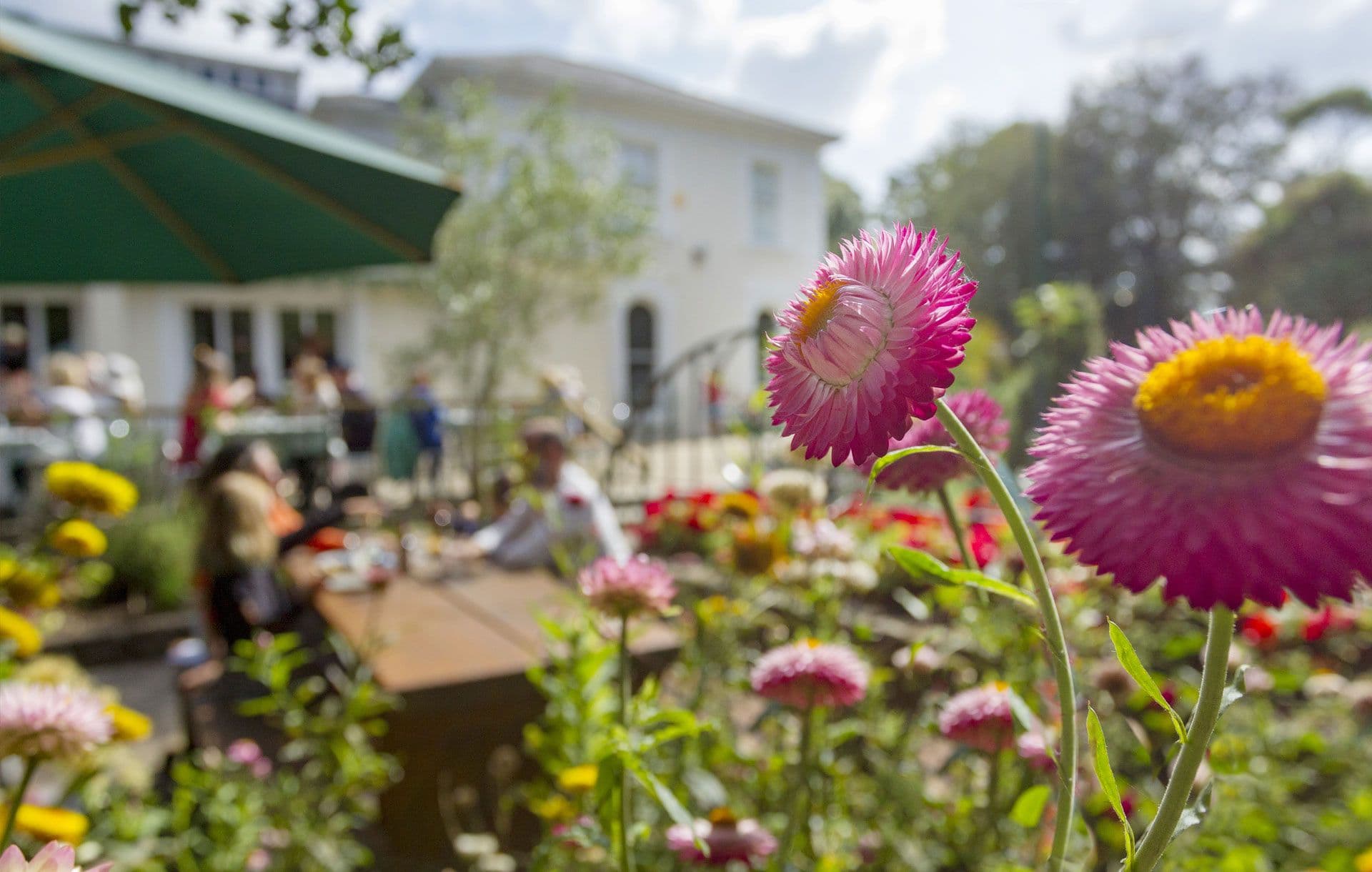The Lizard
The most southerly point
The rare geology of this area creates a haven for exceptional plants and flowers and a coastline dotted with little fishing harbours and gorgeous sandy bays fringed with rare rock formations and caves.
A captivating area
Head south onto the Lizard and the scenery changes. The sea seems a touch bluer, the light a little brighter and the land a little flatter! Underneath you the geology is unlike anywhere else in Cornwall, rocks that formed 350 million years ago somewhere south of the equator are responsible for the unique landscape, a plateau surrounded by robust sea cliffs, here and there providing a safe haven for a small harbour and fishing village.
Here on the most southerly part of mainland Britain, the land is exposed to the elements, sticking out into the Atlantic gales. It can be a beautiful place, but it can also be a wild place. For hundreds of years, it has been the first sighting of land for sailors heading home from foreign shores and it’s often a place of refuge for rare birds blown off course when out at sea.
But head inland and the heathland offers pleasant walking in one of the rarest habitats in the country. A chance to discover Cornish Heather, a rare plant only found on the Lizard and classed as the County flower of Cornwall, plus some of the other 600 species of flowering plants that grow here, including several on the international red list of threatened species.
The East Coast
You have to be adventurous to explore the eastern side of the Lizard, a maze of lanes running across Goonhilly to small coastal communities such as Porthallow, Coverack and Cadgwith. The satellite dishes that you pass being a modern marker to a landscape that has been at the forefront of communications for hundreds of years. Turn left off the B3293 and you enter the Meneage, a word that means ‘land of monks’. Small villages and farmsteads are reached along narrow lanes where in the spring daffodils and lavender turn the fields multi-coloured. Travel far enough north and you will reach the south side of the Helford Creek, hidden for much of its length by ancient woodland, including Frenchman’s Creek, made famous by the writer Daphne Du Maurier.
The village of St Keverne with its busy square, is a hub for lanes that branch off like spokes on a wheel. Overlooked by the Church, whose graveyard contains the graves of over 400 men lost along the nearby coast, the tower still acts as a daymark for local sailors and fishermen as they avoid the fate of others. From here you can find your way to Porthallow or Porthoustock, small communities that grew up because of fishing and quarrying. Neither trade brings in much revenue these days, so the appearance of a tourist is usually welcomed in the few cafes and pubs.
South of St Keverne, Coverack can seem like a buzzing metropolis after driving through the surrounding countryside. Fishing boats bob in the little harbour and visitors laze around on the beach. But a short walk along the South West Coast Path either side of the village will soon get you back out into the wild side of Cornwall.
Kennack Sands sits in a little bay just north of Cadgwith. It’s a mecca for geologists who search out the various types of rock that back the two beaches. A car park and a couple of café’s are on hand for visitors to this remote stretch of coastline, as are a number of camp sites. Cadgwith itself is one of those Cornish fishing villages famed for its looks. The thatched buildings nestled in the little cove have been a focus for photographers and artists for many years. The fishermen still haul their boats up the beach each evening and then retire to the pub for a pint, especially if they have had a good catch.
From Cadgwith it’s not far around to Lizard Point, but don’t ignore Church Cove, another place where you will still find thatched cottages. The Lizard Lifeboat is housed just beyond the cove and a short walk from Bass Point where Lloyds once kept a lookout for ships returning home from foreign shores and sent message by telegraph to London. It was also near here that Marconi sent his first radio message up the coast to the Isle of Wight. Nowadays the Lizard Lighthouse makes sure mariners are safe, and its visitor centre is well worth a visit before you head out to the most southerly point of the British mainland.
The West Coast
Facing the full force of the Atlantic Ocean, the Lizard’s western coast is one of long beaches and tall sculptured cliffs. It’s a popular place for bird watchers, it being the first place many rare migrants land when blown off course while out over the sea. It’s also home to RNAS Culdrose, for many years the home of the air-sea rescue helicopters that would bravely fly out into the Atlantic to rescue stricken sailors. And yet on a calm day, this part of Cornwall can’t be beat for picturesque coves and long evenings watching the sun set over the sea.
The port of Porthleven is fast becoming a challenger to Padstow as Cornwall’s food capital. It holds a popular food festival each year and the harbour is lined with great places to eat. There’s also a burgeoning art scene with a choice of galleries to visit. Come out of season and you may be lucky to see the waves battering the clock tower at the mouth of the harbour, or surfers doing battle with one of the finest reef breaks in Cornwall.
Helston is the chief town for the Lizard, and is famous for Flora Day which takes place in early May. Townsfolk dress up in their finery and dance around the town from dawn to dusk, following the band through gardens, houses and shops. Nobody quite knows when this all started but a visit to the Museum of Cornish Life in the town will help explain many of the traditions. You will also find out about Helston’s days as a port. These are now long gone, the river serving the town now blocked off from the sea by the Loe Bar, a sandy ridge that has formed Loe Pool, the largest natural area of fresh water in Cornwall.
At Gunwallow, the small church down on the beach is slowly being engulfed in sand. Fans of the Poldark tv series may recognize the beach as it ‘starred’ in some of the earlier episodes. Dollar Cove, adjacent to it, is said to get its name from a shipwreck where a cargo of gold coins were lost. If you look very carefully, you may find one. As the church succumbs to the encroaching sands, so the little harbour at Mullion tries its hardest to defy the winter storms. Owned by the National Trust, this pretty cove is a magnet for tourists as is the village of Mullion just inland, a popular base for staying in the area with a couple of good hotels offering unrivaled sea views close by.
From Mullion it’s a good walk to Kynance Cove, perhaps Cornwall finest beach? Here the serpentine rock has been shaped into islands, caves and rocky outcrops. With the tide out, silver sands are revealed, a true paradise. But, because of its popularity, Kynance can get crowded. The car park is not large, so either come early or leave it till later in the day, and be aware that when the tide is in, there’s little or no beach.
Lizard Town marks the end of the road, though a narrow lane runs down to a car park at the lighthouse. There’s plenty of facilities grouped around the village green, from café’s to pubs, gift shops and a small number of stone polishers, creating ornaments out of the local serpentine.
The Lizard Peninsula is famous for the local serpentine stone, a unique metamorphic rock which is dark green, veined with red and white. Popular when shaped and polished, there are still a few workshops at Lizard Town. Queen Victoria is said to have loved the stone and had a fireplace built out of it at Osbourne House on the Isle of Wight.
The Helford
The peaceful, wood fringed estuary and creeks of the Helford form the north-eastern edge of the Lizard. Best explored by foot or even better by boat, this area has been loved for years by those in the know. On the northside, the gardens of Glendurgan and Trebah make use of the micro-climate to grow sub-tropical plants, but a springtime visit to the area will reveal colourful flora everywhere, in lanes, on the coast path and in the little villages that hide up the wooded creeks.
One such village is Gweek, once a busy little port before the river silted up. There are still plenty of boats of all shapes and sizes at the head of the creek, but they have to wait for a high tide to move. Gweek is most famous these days for the Seal Sanctuary situated on the hillside above the river. Here rescued seals are nursed back to health before being put back into the sea, every visit helps the sanctuary’s hard work.
Perhaps the most famous creek is Frenchman’s, imortalised in the novel by Daphne Du Maurier. You can walk to it from the village of Helford, but the best way is to kayak into it, the low branches reaching out to grab you and strand you forever!
Where to stay
Why not stay a little longer and explore everything this captivating region has to offer? Discover quaint guest houses and cosy inns & pubs, quirky glampsites and luxurious hotels.
Things to do
Find things to do in this region. With a beach for every day of the week and picturesque outdoor spots, the Lizard is the perfect place for your next outdoor adventure.
FAQs
View allThere is a seasonal dog ban in place at Kynance Cove from the 1st of July to the 31st of August, between 10am and 6pm. Dogs are welcome at all other times.
Kynance Cove is not a lifeguarded beach, and swimming should only be attempted by strong, confident swimmers. Be mindful of strong currents, especially at low tide, and follow the directions on signs on the beach.
A tradtional Cornwall 'pilchard and smuggling' village, the 15th century church of St Mellanus in the centre of Mullion is worth visiting, above all for the noteworthy wood carvings in the interior. The village also contains plenty of tourist facilities, from fish restaurants to gift shops, and from art shops to pubs.
The geology of the Lizard is unique, which leads to amazing formations which can be viewed along the coastline. This also allows for a wide range of unique flora and fauna, and the area is, as such, designated as part of Cornwall's National Landscape.
In Cornish, Lys Ardh means a high place or high court. The Lizard Peninsula sits high above the sea, hence the name. It has nothing to do with Lizards although you may find some basking on the cliffs or the heathland around Goonhilly during the warm summer.
Lizard Point is the most southerly point of mainland Britain, however Land's End is the furthest point from John O Groats in distance, hence it tends to be the place most journeyed to.
Neither is Land's End the most westerly point on mainland Britain, that honour falls to Ardnamurchan Point in the Scotish highlands.
There is free parking in Lizard town on the grassey square (although a donation is expected). The National Trust have a car park closer to the point where the Lighthouse Museum is. Although it is possible to drive down to the point, there is no parking.
Yes, there is a good service with most busses passing through or starting from Helston.
Stay connected
Find us on socials and stay connected with the Cornwall you love.
We use cookies to personalise content and ads and to analyse our traffic. You consent to our cookies if you continue to use our website. (Privacy Policy)









